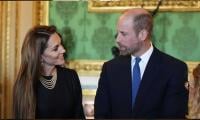Reversal of ‘accession’ and Islamabad’s options
The Hindu nationalists have finally struck down whatever was left of the fig leaf of “Special Status” of Indian-held Kashmir while making it a fait accompli for other two claimants of the disputed state, Pakistan and China, if not the Kashmiris craving for ‘Azadi’.
Not contended with almost complete diluted separate status of former Jammu and Kashmir State, the BJP has consigned the Instrument of Accession by Mahraja Hari Singh of Kashmir and a meticulously negotiated Article 370 between Jawaharlal Nehru and Sheikh Abdullah to the dustbin of history along with the secular legacy of Jawaharlal Nehru and his idea of India. Just not the J&K, an asymmetrical federation and its other states/union territories with peculiar terms will now be left at the mercy of internal-colonialization. The Hindu Rashtra under Modi, ironically in the reverse-image of ‘two-nation’ theory, is now redefining the ethos of India, not as envisioned by founding fathers Gandhi and Nehru but what the elders of Sangh Parivar had wanted it to be a Hindu Rashtra.
Having lost his control over the state and besieged by the troops and tribal volunteers from Pakistan, Mahraja had to sign an Instrument of Accession to India as did other princely states.
The anomaly, however, was that J&K was a Muslim-majority state. Same was true about princely states with Hindu majority where rulers were Muslims, such as Hyderabad, Junagarh and Manavadar, who declared to accede to the Dominion of Pakistan. This was our folly to insist upon the accession of majority Hindu states on the undemocratic basis of Muslim rulers’ pronouncements. Rejecting Indian offer on Kashmir in exchange for Hyderabad-Deccan, conveyed by Mountbatten, the then prime minister of Pakistan insisted on the inclusion of Hyderabad-Deccan in Pakistan instead of J&K (as narrated by Sardar Shaukat Hayat in his book: The nation that lost its soul). India not only captured those majority Hindu states despite Muslim rulers’ accession to Pakistan, but also annexed Muslim-majority J&K.
The Instrument of Accession was similar for all princely state, but in his letter of acceptance (27 Oct. 1947) of Mahraja’s IoA (26 Oct. 1947) the Governor General noted: “the question of State’s accession should be settled by a reference to the people”. The government of India also concurred that accession is “purely provisional until such time as the will of the people could be ascertained” (White Paper). It took prime minister of India and prime minister of J&K six months to reach accord on Article 370, granting special autonomous status to J&K. The constitutional history of J&K, as illustrated by historian A. G. Noorani, shows the continuous treachery and deceit to dilute Article 370 and reduce the disputed state to be a vessel of the Center. PM Nehru stated in Lok Sabha on 27 Nov. 1963 that Article 370 “has been eroded. There is no doubt that Kashmir is fully integrated”. Indian President’s orders from 1954 to 1994 extended 94 of 97 entries from the Union List and 260 out of 395 Articles of the Indian constitution to J&K, whereas originally only three subjects were to be conceded to the Union.
Seeing breach of the Delhi Agreement of 24 July 1952, Sheikh Abdullah while addressing State’s Constituent Assembly warned against “altering arbitrarily the basis of our relationship with India … (which) may invite serious consequences for a harmonious association of our State with India”. The differences between Sheikh and Nehru became unbridgeable when under pressure from public opinion Sheikh Abdullah sought an agreement between India and Pakistan on the settlement of Kashmir issue as opposed to Nehru who insisted upon the exclusion of Pakistan. Consequently, Sheikh was unconstitutionally sacked and imprisoned for a longer time. He was replaced by a renegade Bakhshi Ghulam Mohammed who ruled the state as a crony of the center till 1964. After the imprisonment of Abdullah, all the chief ministers of the State were the nominees of the center till 1975. On his release, Abdullah entered into an accord with Prime Minister Indira Gandhi in 1975, which also collapsed since Sheikh wanted the restoration of status quo ante as it existed in 1953 before his arrest. The movement for the restoration of ‘pre-1953 status’ failed to turn the wheel of coercive ‘integration’.
It is interesting to note that a reference to seek UN intervention to resolve Kashmir dispute was made by Prime Minister Liaquat Ali Khan during his meeting with Nehru and Governor General Lord Mountbatten in Lahore on 8 December 1947. Nehru was hesitant, despite having sought the ceasefire, but agreed to it on 27 December. But it was Gandhi who deleted the third option of independence from the plebiscite question—restricting accession to India or Pakistan. Over a dozen non-binding resolutions were passed by the UN Security Council for a plebiscite in Kashmir that were consented by both India and Pakistan. In his repeated public announcements, Nehru remained apparently committed to the plebiscite till the most popular leader of Kashmir Sheikh Abdullah was on board until 1953 and Pakistan remained lukewarm because it had to vacate the territories it had captured in the first Kashmir War. Later, after the imprisonment of Abdullah, Pakistan became quite equivocal about the UN resolutions.
Now, Modi has dispensed with an erstwhile policy of secularists what the BJP’s ideological vanguard Rashtriya Swayemsewak Sangh (RSS) dubs as “appeasement” of Muslims, in General, and the Kashmiris, in particular. Prime Minister Modi has turned the tables on whatever the accession case India had built over the decades and has also shattered the Indian national consensus over J&K’s status. Home Minister Amit Shah moved not only two bills to scrap Article 370, but also got approval of the two houses of parliament for Jammu and Kashmir Reorganization Bill and Jammu and Kashmir Reservation (2nd Amendment) Bill. The later bills bifurcated the state and reduced it to a status of two Union Territories to be run through two Lt. Governors—one for Ladakh without an assembly and one for J&K with an assembly like Delhi without state-like executive powers. Reversal of Article 35-A, ostensibly for colonization and demographic transformation, will allow residency, permanent settlement, property rights to the aliens who were prohibited earlier. This was what the RSS had desired in 2002.
The Kashmiris, especially from the Valley, Kargil and some parts of Jammu, who had lost hope in the revival of ‘pre-1953 status’ are not expected to coalesce in. This has alienated pro-Article 370 mainstream parties. This authoritarian annexationist step has been debunked by the Indian opposition as dis-integrationist and it is going to further ignite the indigenous intifada at a much larger scale and with greater intensity. Nine-days of curfew, extended deployment of troops and designs of greater repression are not likely to break the Kashmiris’ resolve to fight back for Azadi. I have been at a loss to understand that a large section of Indian liberal intelligentsia, in the colonial tradition of Gora Sahibs, have not been able to understand the meaning of a simple word AZADI (Freedom) that their and our forefathers had fought for decades for the independence of India from the colonial yoke. They are also at a loss to comprehend, like many of us in our Punjab, what is meant by right to self-determination. Quite hypocritically, if we are for the right to self-determination of Kashmiris (if they join us), most Indians were quite enthusiastic about the Eastern Bengalis exercising it in 1970-71.
India by obliterating Article 370 and 35A has repudiated its traditional stand on Kashmir. With this it has also negated Kashmir’s ‘accession’ case with reference to the compact of Instrument of Accession by the Maharaja and the constitutional social contract vide Article 370. Although there are three contradictory judgements of the Supreme Court, leading jurists, including my friend Rajeev Dhavan who thinks that “if the Supreme Court doesn’t say that “this is not judicially manageable” the presidential order won’t be sustainable. By doing so India has done two things: a) internally, replaced special status with center’s rule in two redesigned union territories; b) externally, making it fait accompli vis a vis Pakistan and China. It implies two potential concessions: a) internally, it can offer full state status like other states to the mainstream J&K parties who are now alienated or after failing to reduce Muslim majority may further divide the state by separating Jammu as a separate state; b, externally, it can offer Pakistan to turn Line of Control (LoC) into a permanent border and also China to turn Line of Actual Control (LAC) into an international border. Interestingly, responding to China’s concern, the External Affairs Minister of India S. Jaishankar assured his counterpart in Beijing yesterday that “The issue (Aksai Chin) came up in terms of when they were referring to what they thought the impact of Article 370 was going to be and how it could impact the India-China boundary question. I told them that does not change the international boundaries of the Line of Actual Control (LAC) and Line of Control (LoC) with Pakistan.”
Despite the abrogation of 370, UN resolutions are on the book and Shimla Accord still binds India and Pakistan to bilaterally and peacefully resolve Kashmir dispute in accordance with the UN Charter. Scrapping Shimla Accord would make no sense since it binds India to resolve Kashmir dispute. India would love that Pakistan withdraws from the obligation under Shimla Accord. Shimla Accord doesn’t prohibit Pakistan to take the issue to UN or have a recourse to the UN resolutions that provide a legal course that nobody is now interested in to implement. By the way UN resolutions are almost dead and both sides have repeatedly negotiated Kashmir beyond the scope of the UN resolutions. The Lahore Declaration signed between Prime Minister Vajpayee and Prime Minister Nawaz Sharif and prolonged parleys that President General Musharraf held first with Prime Minister Vajpayee and later with prime Minister Manmohan Singh were efforts to find an ‘out of box solution’. India has long been offering to turn LoC into a permanent border.
The idea that AJK should be declared a sovereign state would be a non-starter. Everybody will take it as s stunt and Pakistan will no more be a party to the conflict with India. AJK could never become a UN member and will remain PoK as designated by UN Resolution. There are more than half a dozen other such disputes that were amicably resolved and provide good insight into ‘out of box solution’. General Musharraf’s 4-point formula was accepted by the Prime Minister of India. It can still be made a basis for, initially, an interim arrangement and may, subsequently, provide the basis for a permanent settlement if the Kashmiri people so agree. In fact, essentially, the voice of the Kashmiris people from the valley would acquire greater weightage than any other factor.
India has alienated all the mainstream parties committed to Article 370. The people from the Vale of Kashmir, Kargil and parts of Jammu won’t accept the reduced status. There will be a big intifada in Kashmir Valley against unprecedented oppression that will put India in the watch of international human rights bodies. Indeed, India might try to turn it into a war against terrorism that we must not provide any opportunity with by keeping now outlawed guest jihadis under strict check. The best course for Pakistan is not to allow any military provocation spiral into a big conflict. We must keep restraint. Support Kashmiris on grounds of human rights. Practically speaking, AJK and GB could become Kashmir Baney Ga Pakistan as the people from the Valley would not rest without some quantum of Azadi. Given the level of resistance in the Valley, India is likely to fail to change the demography. It might go for trifurcation. Essentially, Pakistan’s concern is Muslim-majority Kashmir Valley. And at best we can talk to India is to relax or soften the border with the Valley as Musharraf-Manmohan understanding provided.
There is still a possibility of exploring with India about Manmohan-Musharraf formula. Best way is to have a back channel, rather than taking self/ injurious steps of lowering of diplomatic relations and ending trade. Most thoughtless thing is the declaration to revise bilateral agreements which also include Indus Water Treaty. Separating Gilgit and Baltistan from Kashmir imbroglio would be a good option to explore.
-
 Prince Harry Hopes To Show Archie, Lilibet Where He 'grew Up'
Prince Harry Hopes To Show Archie, Lilibet Where He 'grew Up' -
 Kristin Davis Dicusses Fate Of Her Sex And The City Character
Kristin Davis Dicusses Fate Of Her Sex And The City Character -
 Zara Larsson Steps Up Criticism Against 'evil' Policies
Zara Larsson Steps Up Criticism Against 'evil' Policies -
 Adam Sandler Jokes About Aging As He Accepts Career Honour
Adam Sandler Jokes About Aging As He Accepts Career Honour -
 Royal Stalker Cases Increase Following Harry, Meghan's Marriage: Report
Royal Stalker Cases Increase Following Harry, Meghan's Marriage: Report -
 Sarah Ferguson Eyes Princess Diana’s Private Letters In Bid To Secure Future
Sarah Ferguson Eyes Princess Diana’s Private Letters In Bid To Secure Future -
 Andrew Plots Secret Sales Of Royal Jewels Amid Royal Lodge Eviction
Andrew Plots Secret Sales Of Royal Jewels Amid Royal Lodge Eviction -
 Abbott Elementary Star Chris Perfetti Hints At What To Expect From Season 5
Abbott Elementary Star Chris Perfetti Hints At What To Expect From Season 5 -
 Prince William Always Ready To Step Up: ‘He’s Barely Able To Contain His Fury When Kate’s Involved’
Prince William Always Ready To Step Up: ‘He’s Barely Able To Contain His Fury When Kate’s Involved’ -
 Florida Woman ‘tricked Innocent Movers Into Helping Her’ $7k Burglary: Report
Florida Woman ‘tricked Innocent Movers Into Helping Her’ $7k Burglary: Report -
 Harry Deserves Top Protection As King Charles’ Son, Prince William’s Brother
Harry Deserves Top Protection As King Charles’ Son, Prince William’s Brother -
 Meghan Markle Receives Key Advice As Experts Warn She’s Doing Too Much
Meghan Markle Receives Key Advice As Experts Warn She’s Doing Too Much -
 Kelly Clarkson Weighs In On Life Without The Father Of Her Children
Kelly Clarkson Weighs In On Life Without The Father Of Her Children -
 Paul Mescal, Gracie Abrams Committed To 'long Distance' Relationship: Source
Paul Mescal, Gracie Abrams Committed To 'long Distance' Relationship: Source -
 Street Fight Turns Bloody As Innocent Bystander Shot In The Face
Street Fight Turns Bloody As Innocent Bystander Shot In The Face -
 Tom Blyth Shares His Two Cents On The Importance Of Rom Coms
Tom Blyth Shares His Two Cents On The Importance Of Rom Coms



